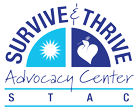By Karley Gordon
Did you know that students can be victims of human trafficking? As a student myself, this information was shocking to me. It became my mission to educate my community about the dangers of human trafficking because anyone, regardless of age, race, ethnicity, gender, or religion, can become a victim of trafficking.
What is human trafficking?
Human trafficking is complex and hard to define because each case of trafficking and every survivor has had a different experience. Contrary to the media portrayal of trafficking, it can be a violent or non-violent crime, and most of the time, traffickers groom their victims to build trust, and it does not involve a kidnapping. Trafficking also takes many forms and can happen anywhere; it consists of the exploitation of labor or sex in which there is an exchange for something of value and where, frequently, the victim receives little or no compensation. Unless the victim is a minor in a sex trafficking case, the trafficker has to use force, fraud, or coercion for the exploitation or abuse to meet the legal definition of human trafficking. (This isn’t true for minors who are sex trafficked because a minor cannot legally consent to a sex act.)
Who are the main targets of trafficking, and why?
Although any demographic of person can become a victim of trafficking, most victims are vulnerable in some aspect of their lives. Vulnerabilities such as being in a challenging financial situation, or a violent or unstable relationship can make it easy for a trafficker to groom their victim.
How could students become victims of trafficking?
Just like everyone else, students can also become victims of trafficking. One vulnerability that students carry is simply being a young age and lacking the life experience to know what trafficking is, let alone spot the red flags and protect themselves and others from the dangers of trafficking. Another vulnerability is that many students are financially and emotionally independent of their parents and economically insecure or have come from a foreign country and don’t have the knowledge or guidance to know when they are getting into a potentially dangerous situation.
Red Flags
When starting a new job, there are a few red flags to look out for that can help protect you from becoming a victim of human trafficking. Again, trafficking can take many forms and can hide beneath other crimes, such as money laundering, identity theft, retail crimes, tax evasion, and gang activity. Victims of trafficking in the workplace or labor trafficking victims may seem to live at work, receive inconsistent and meager paychecks in consideration of the many extraneously long hours they work, may work long hours with no breaks, and may seem to be consistently monitored by someone.
Trafficking is about money, profit, and greed. So, it is no surprise that traffickers use the financial sector as part of their illegal schemes. Traffickers may get victims to open credit card or bank accounts, and they can use front companies to hide their suspicious activity, withdraw and move large amounts of cash, and frequently open new bank accounts under different names, which can be using stolen identities of their victims.
How I’m helping to end human trafficking with STAC resources
We learn many essential life skills in college, including how to care for yourself and be independent. However, it is unfortunately not in the college curriculum to teach students about human trafficking in the workforce and how to prevent trafficking from happening to you and in your community. I decided to take the free online STACPRO training to educate myself about the dangers of human trafficking in Leon
County and beyond, and I learned many valuable lessons about how to prevent trafficking in my community. Not only did I learn about what human trafficking is and how to avoid it, but I was also able to take what I have learned and educate my friends, family members, and coworkers about the dangers of trafficking and what to do in case you encounter a trafficking situation.
If you or a loved one are seeking support, below is a list of local and national human trafficking resources:
Survive and Thrive Advocacy Center
Call or Text (850) 597-2080
Email STAC@surviveandthriveadvocacy.org
Learn more: https://surviveandthriveadvocacy.org/
National Human Trafficking Hotline Call: 1 (888) 373-7888
Text: BEFREE to 2337333
Learn more: https://humantraffickinghotline.org/
Other important resources:
Domestic Violence 24/7 Hotline: 1(800) 799-SAFE (7233) National Domestic Violence Hotline
Sexual Abuse 24/7 Hotline: 1(800) 656-4673
Rape, Abuse and Incest National Network (RAINN) Suicide Hotline: 1(800) 273-TALK (8255) or text 988 National Suicide Prevention Lifeline
Dating Violence: 1 (866) 331-9474 National Dating Abuse Helpline
Runaway and Homeless Youth: 1(800) RUNAWAY (786-2929) National Runaway Safeline
Missing Children and Child Pornography: 1(800) THE-LOST (843-5678) National Center for Missing and Exploited Children
Get Involved
The Survive and Thrive Advocacy Center supports sex and labor trafficking survivors regardless of age, gender, immigration status, or faith, as well as those who are risk. STAC’s website also has a rich array of information such as topical webinars ranging from CEU-approved training for healthcare professionals to how to protect children and youth from online sex trafficking. Click here to learn more.







